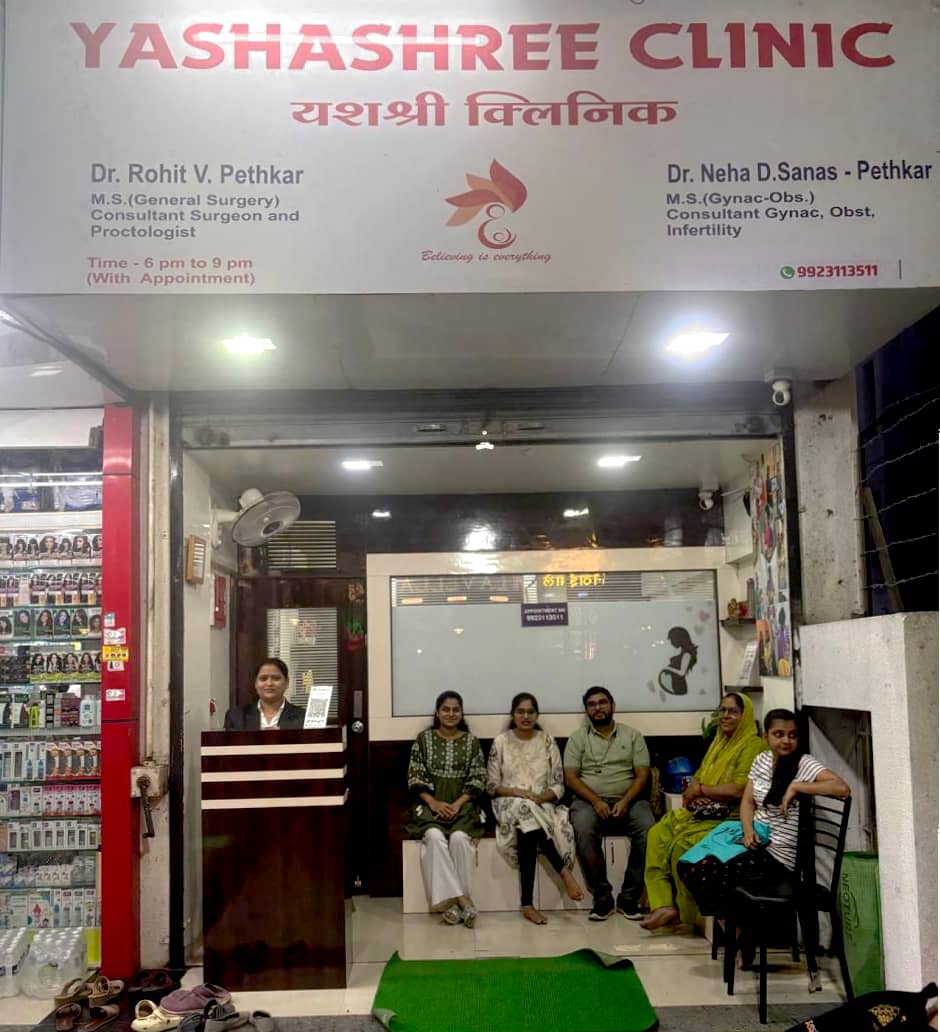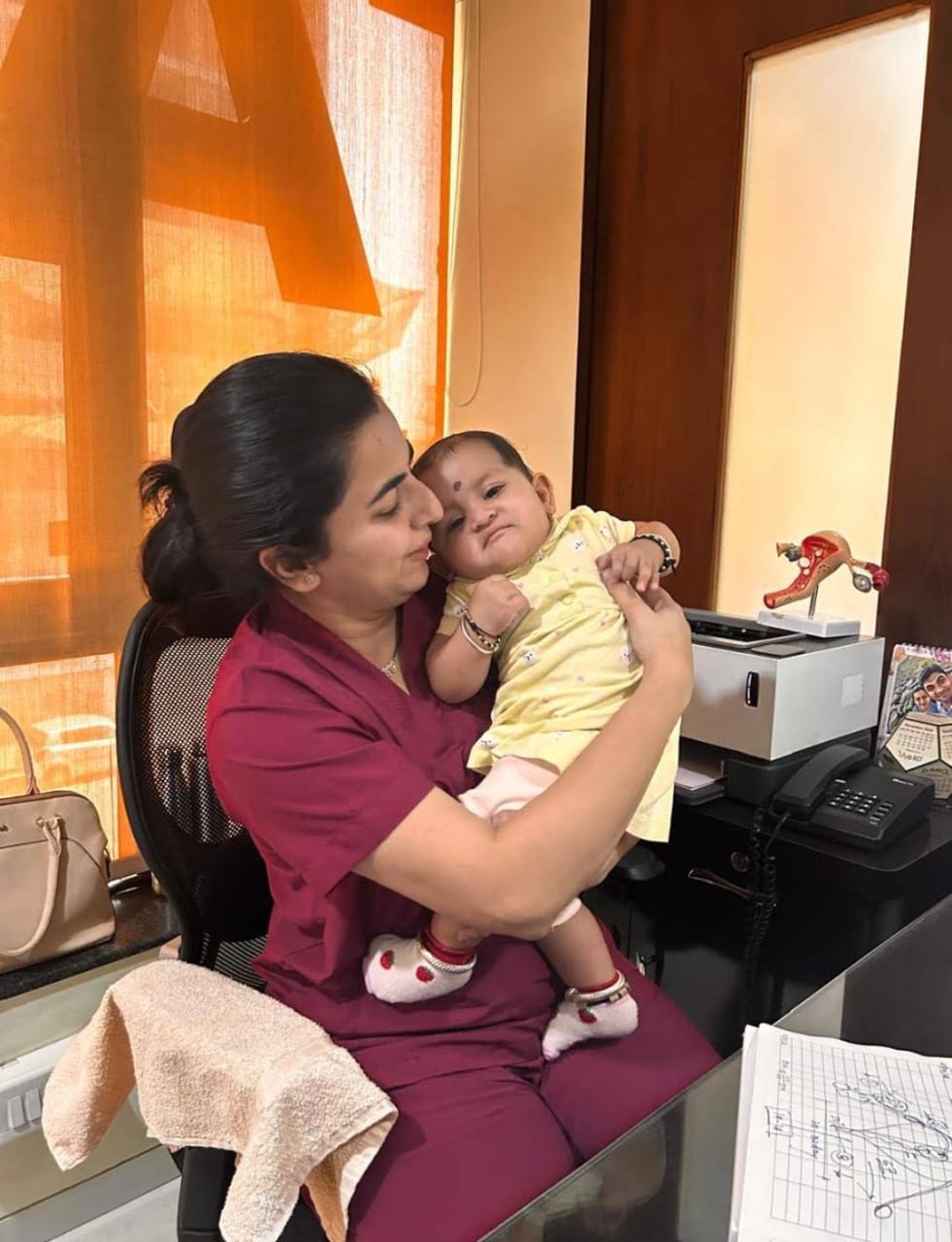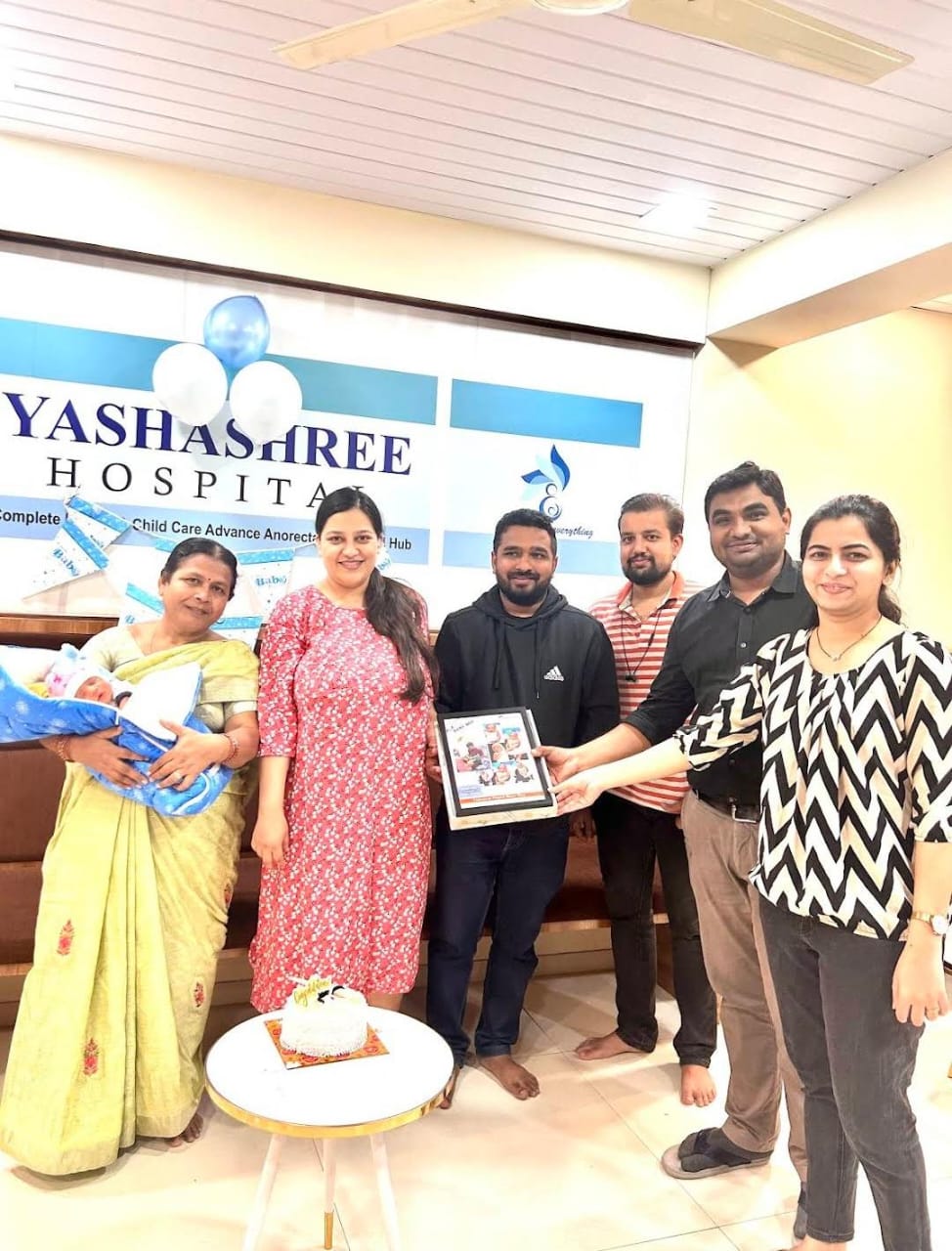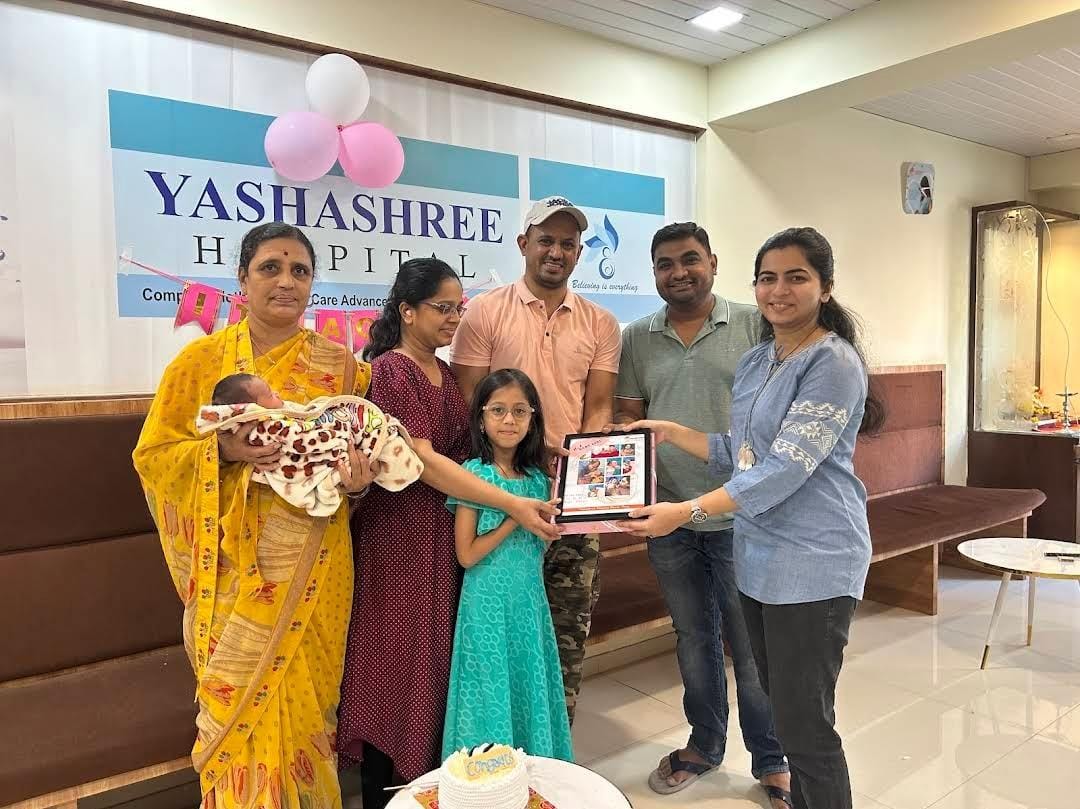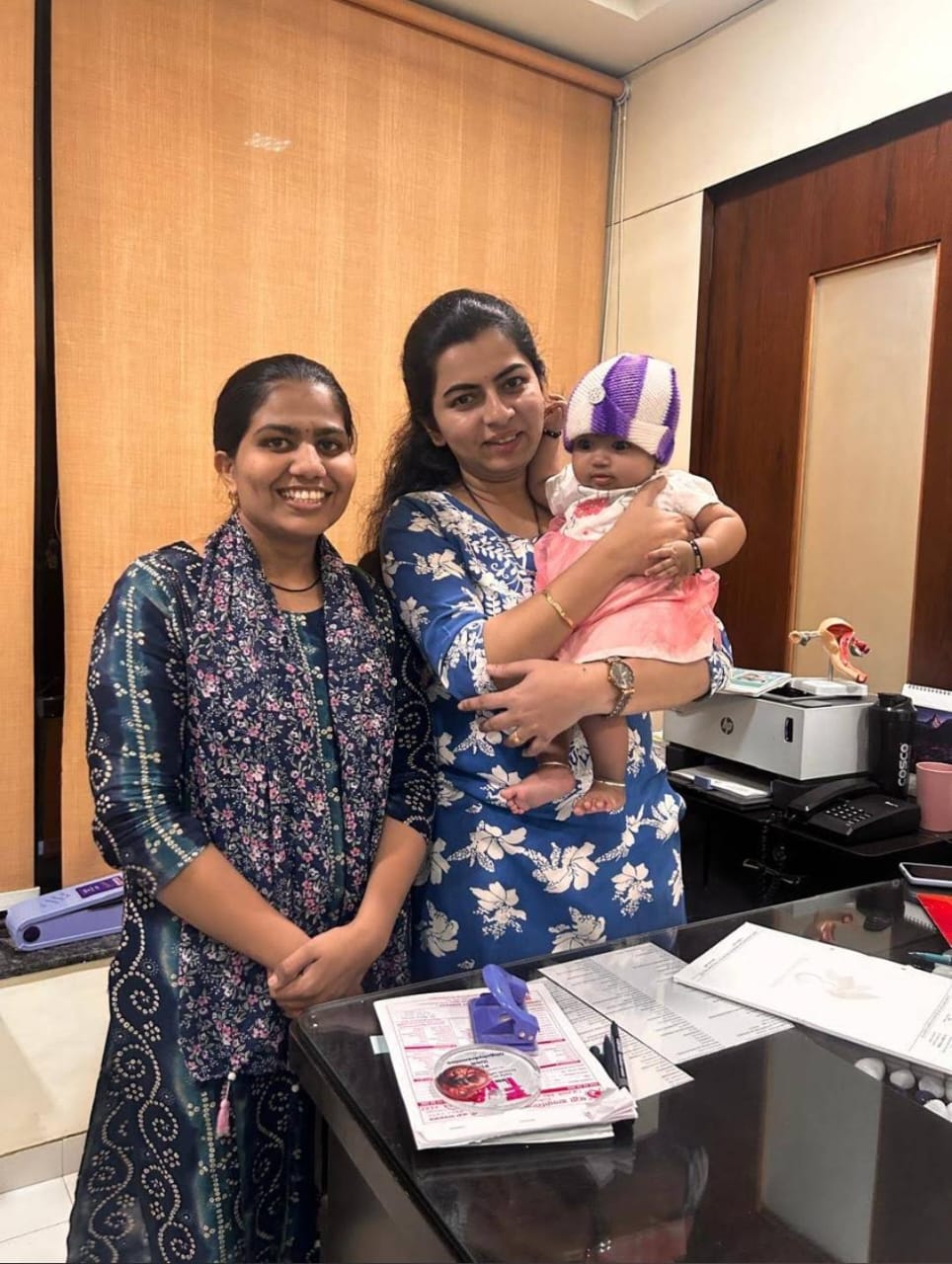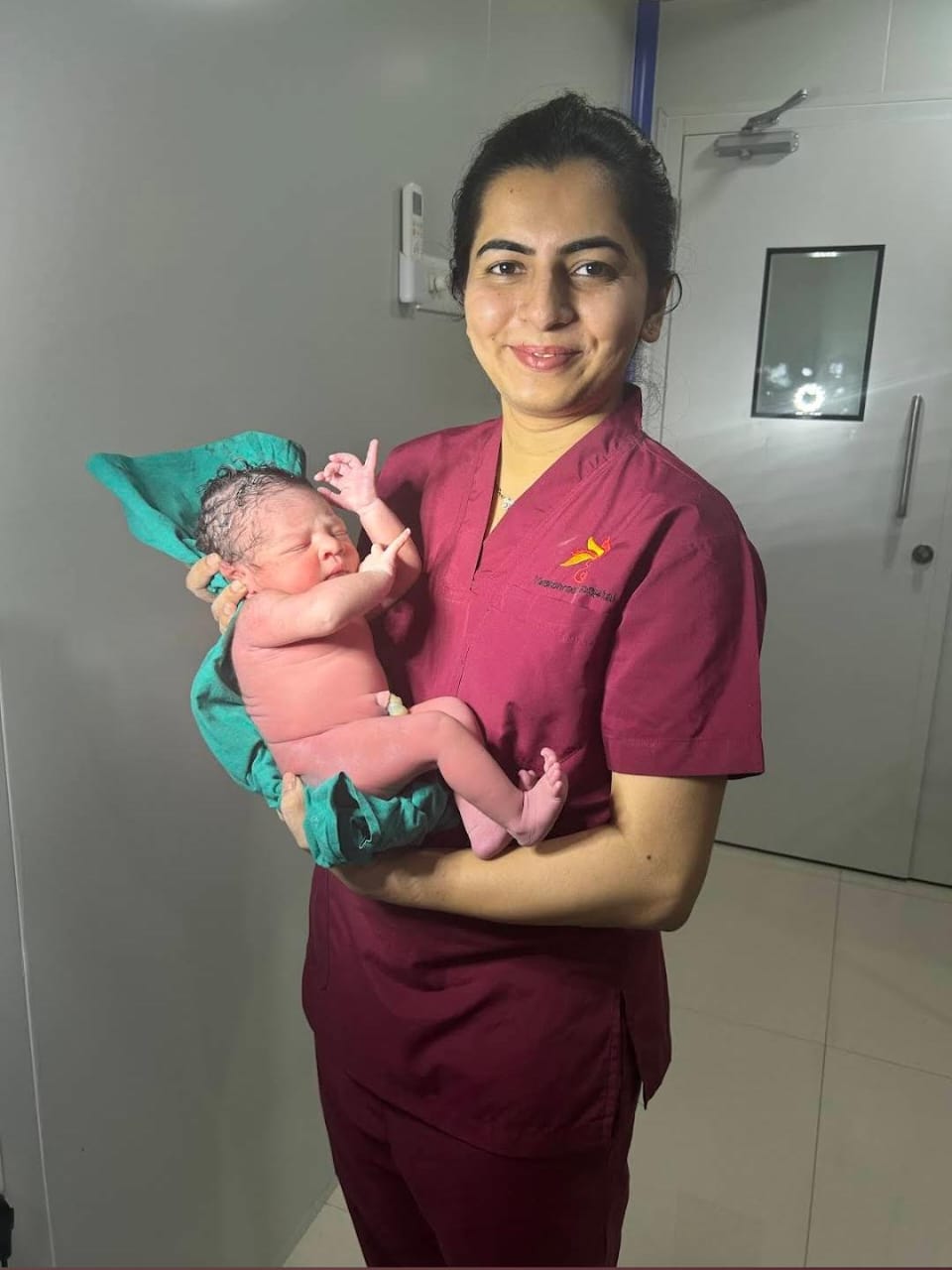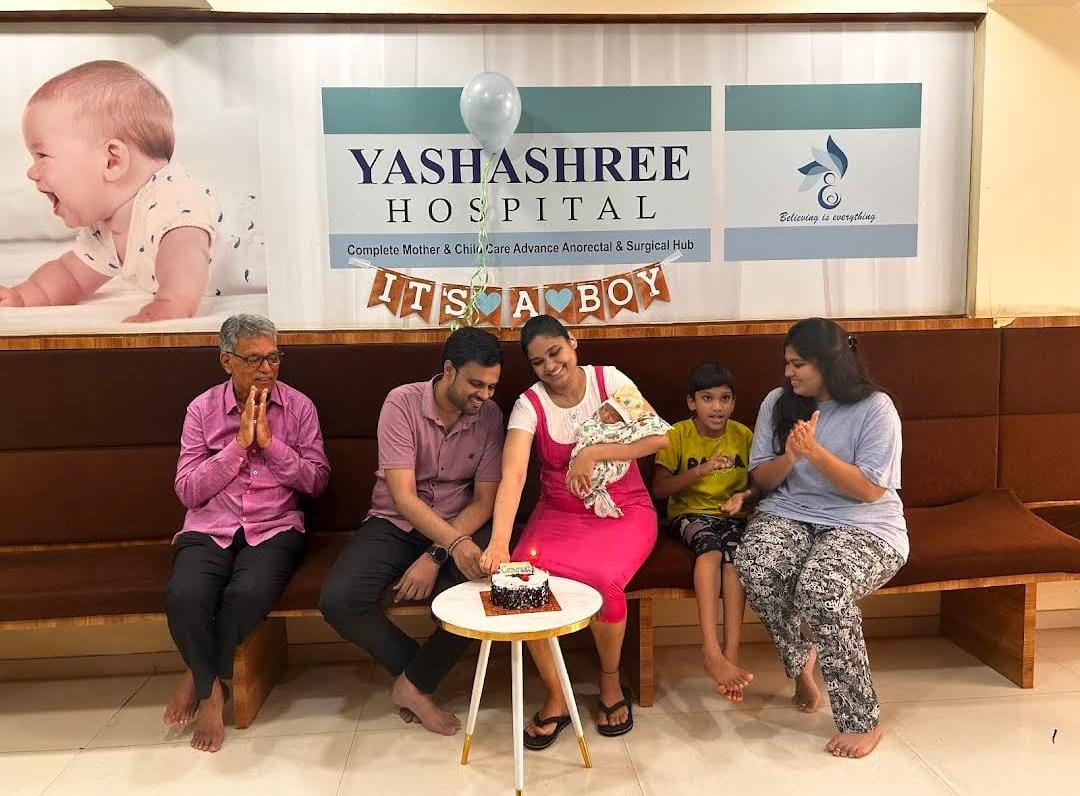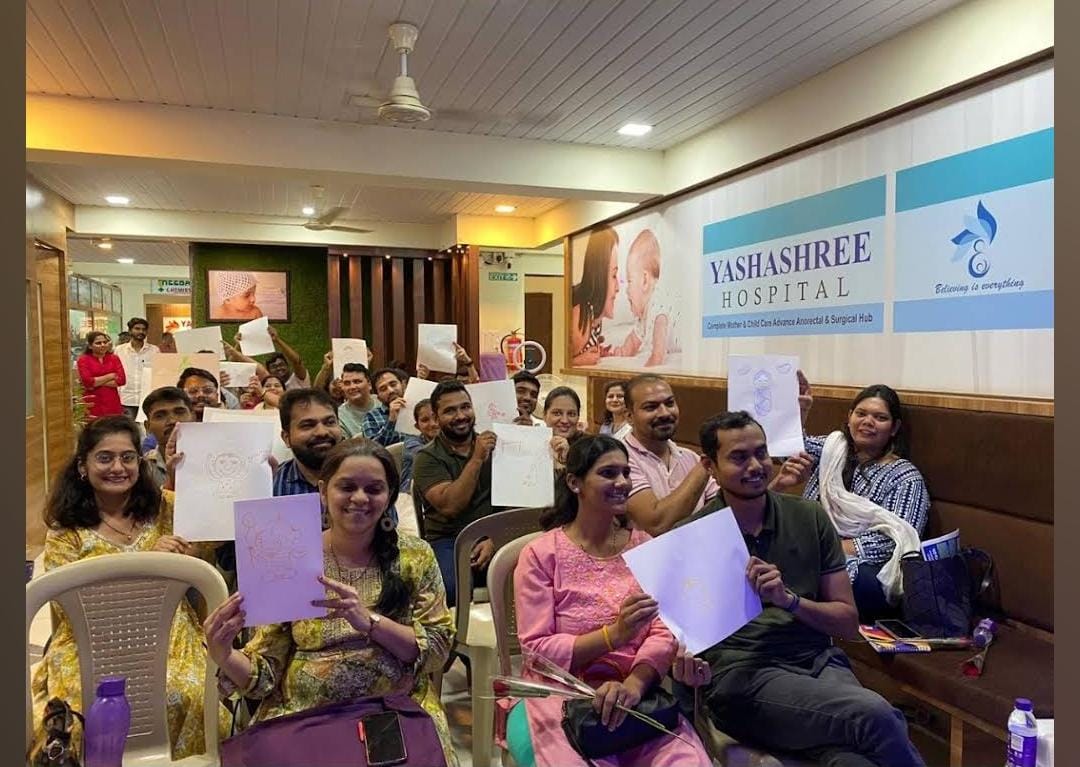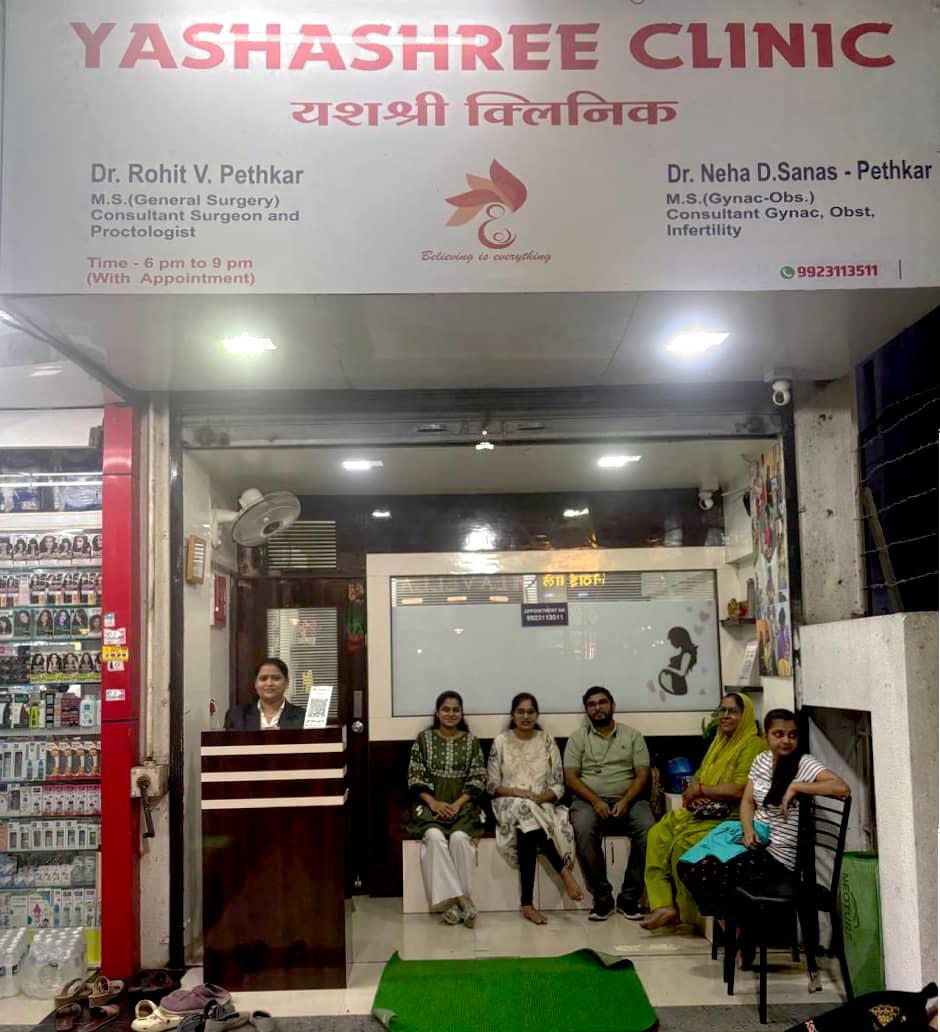About Us
YASHASHREE
CLINIC
Complete mother & Child care
Advance Anorectal & Surgical Hub
Dr. ROHIT PETHKAR
- M.S. General Surgery
- Consultant Surgeon
Dr. NEHA PETHKAR (SANAS)
- M.S. Gynac-Obs
- Consultant Obstetrics and Gynaecology, Infertility
FACILITIES AVAILABLE :
MOTHER & CHILD CARE DEPT.
- Infertility
- All Menstrual Problems (PCOD)
- Preconceptional Counselling
- Antenatal Care
- Garbhasanskar
- Normal Painless Delivery
- Cesarean Delivery
- Contraceptive Advice
- Menopause Care & Counselling
- Hysteroscopy, Hysterectomy
- Correction of Pelvic Organs
- Prolapse & Urinary Incontinence
- All Gynac Laparoscopy Procedures
- All Paediatric Vaccination
- Paediatric Consultant
ADVANCED ANORECTAL & SURGICAL DEPT.
- Piles (Hemorrhoids), Fissure, Fistula
1. Advanced Laser Surgery
2. Advanced Beam
3. Stapler Surgery - General Surgery & Minimal Access Surgery
- Appendix, Hernia, Hydrocele
- Laparoscopic Surgery
- Gall Bladder, Gastrointestinal Diseases
- Breast Diseases
- All Types of Cyst
- Male Infertility
- Laser Treatment for Vericose Veins, Piles
- Consultation for Cancer Diagnosis & Treatment
- Endoscopy: Gastroscopy, Colonoscopy
- Paediatric Surgeries
HOSPITAL TIMING : Mondayt to Saturday - 10:00 am to 1:00 pm & 6:00 pm to 9:00 pm. (Sunday by Appointment)
Products/Services
FEMALE INFERTILITY
Inability to conceive is referred to as infertility. Both women and men play an equally important role in conception. About 30% of infertility cases are due to male-related factors, another 30% are related to female factors, and the remaining 40% involve issues in both partners.
Causes of Infertility in Women:
- Defects in female reproductive organs
- Polycystic Ovary Syndrome (PCOS)
- Hormonal imbalances
- Pelvic Inflammatory Disease (PID)
- Conditions like endometriosis and uterine fibroids
- Advanced maternal age
- Being overweight or obese
- Hypothyroidism
- Smoking and alcohol addiction
- Mental stress
- Malnutrition or physical weakness
- Sexually transmitted diseases
- Side effects of chemotherapy or radiation therapy
- Overuse of painkillers or medications for mental health conditions
- Improper use of contraceptive pills and medications etc.

LAPAROSCOPIC & GYNAECOLOGICAL SURGERIES
Laparoscopic gynecological surgery is a minimally invasive procedure performed using small incisions and a camera. It is used to diagnose and treat various gynecological conditions.
The advantages of this technique include less pain compared to traditional surgeries, faster recovery, and reduced risk of complications. As a result, patients can return to their normal lifestyle more quickly and experience overall improved outcomes.
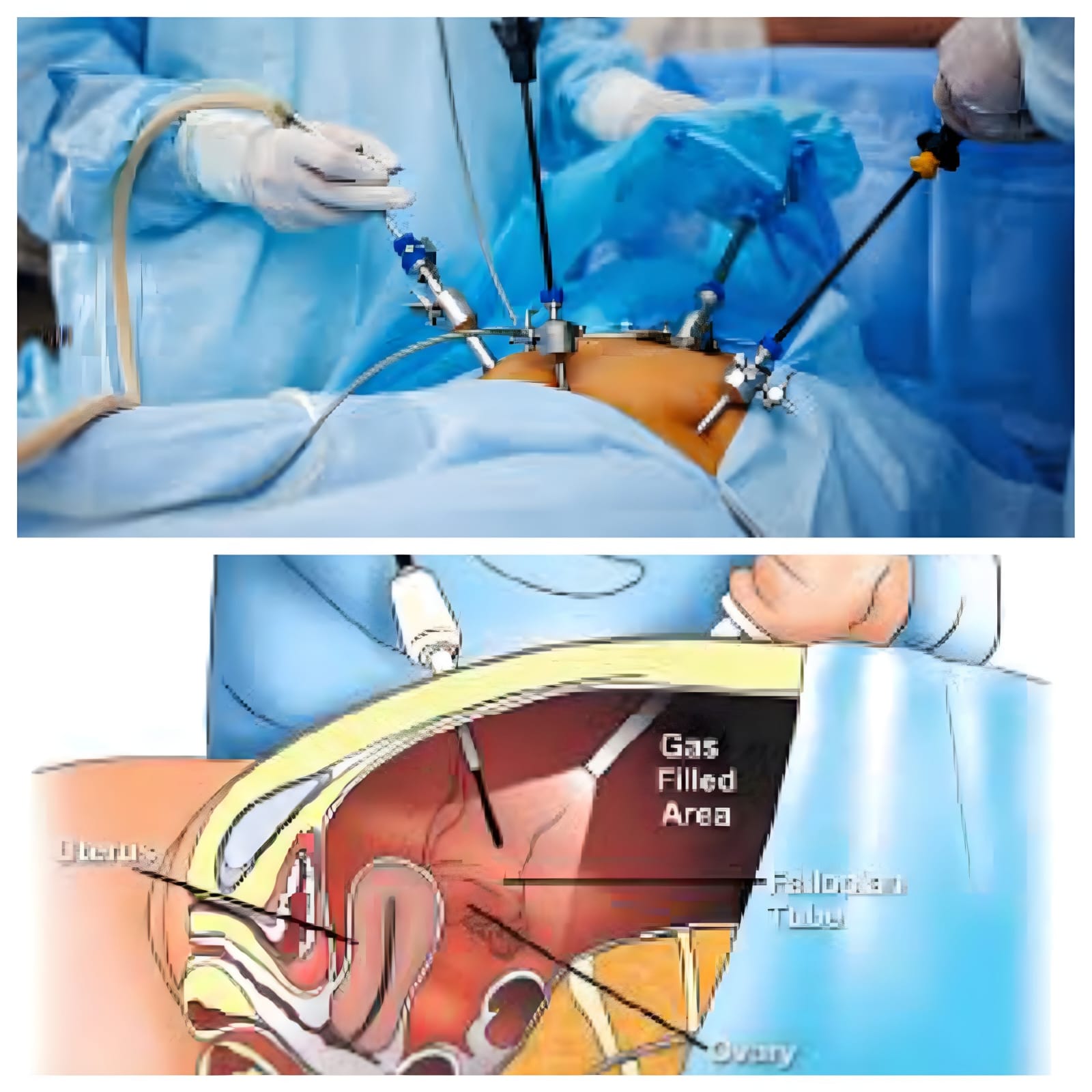
HYSTEROSCOPY : A PROCEDURE FOR UTERINE EXAMINATION
Hysteroscopy is a minimally invasive procedure in which a flexible, lighted tube (hysteroscope) is inserted through the vagina and cervix to examine the inside of the uterus.
Purpose:
It is used to diagnose and treat conditions such as irregular bleeding, uterine fibroids, polyps, adhesions, infertility, and blocked fallopian tubes. It is also used as a pre-evaluation step before fertility-related surgeries.
Benefits:
- Accurately identifies problems within the uterus.
- Conditions like polyps or fibroids can be treated during the same procedure.
- In some cases, it helps improve fertility.
- No incisions or stitches are required.
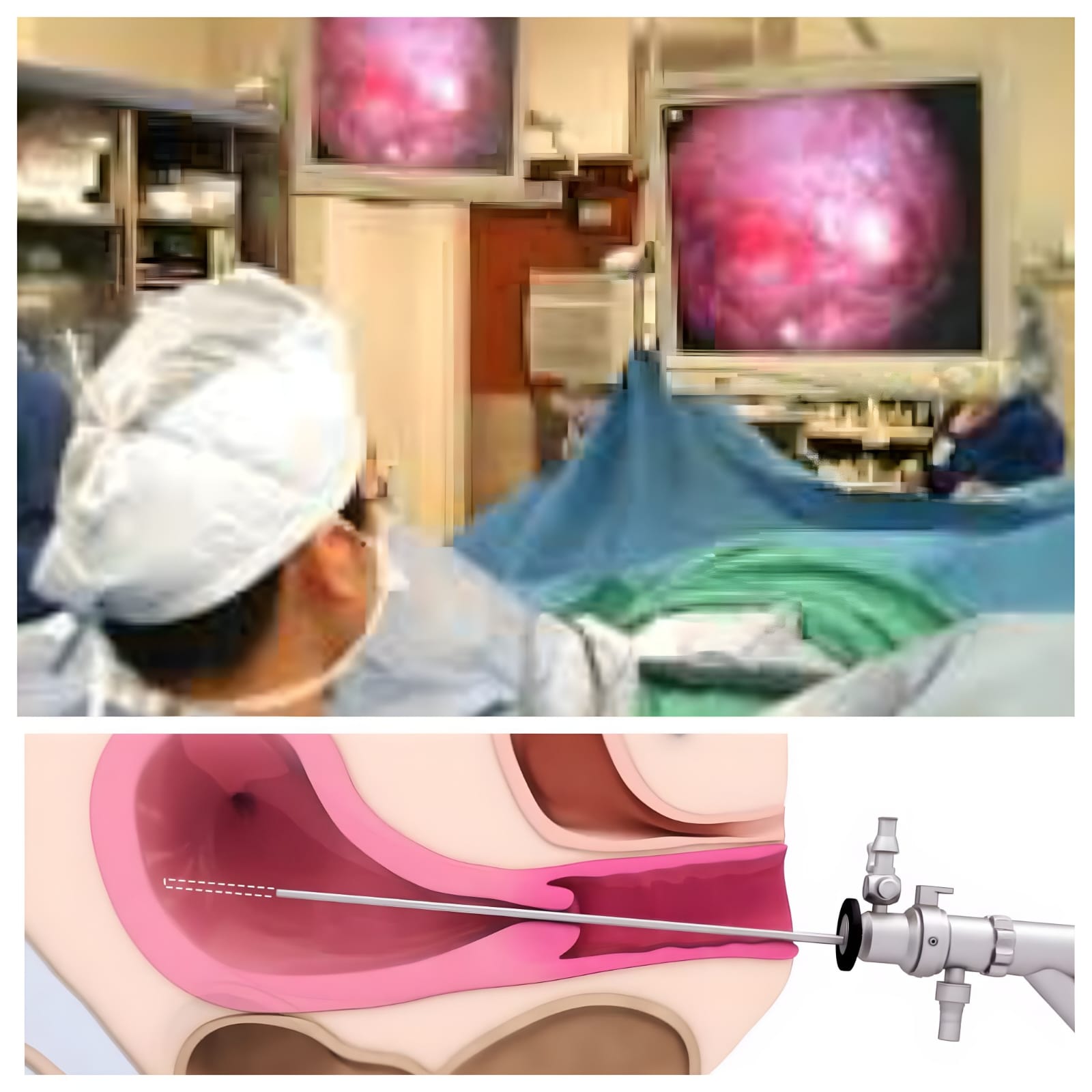
PRE-CONCEPTIONAL COUNCELING
Preconception counseling involves discussions and guidance for individuals or couples planning to conceive, focusing on health, lifestyle, and medical factors. It provides essential advice to increase the chances of a healthy pregnancy.
Benefits include:
- Identifying and managing potential risks
- Improving fertility
- Creating a supportive environment to ensure a successful and healthy pregnancy

ANTENATAL CARE (ANC) CHECKUPS & TREATMENT
ANC (Antenatal Care) refers to professional prenatal guidance that includes various medical examinations during pregnancy. These consultations help ensure regular monitoring of the health of both the mother and the growing baby, enabling early detection of potential issues. ANC includes various tests, nutritional advice, and guidance for a healthy pregnancy, thereby promoting a safe and positive childbirth experience.
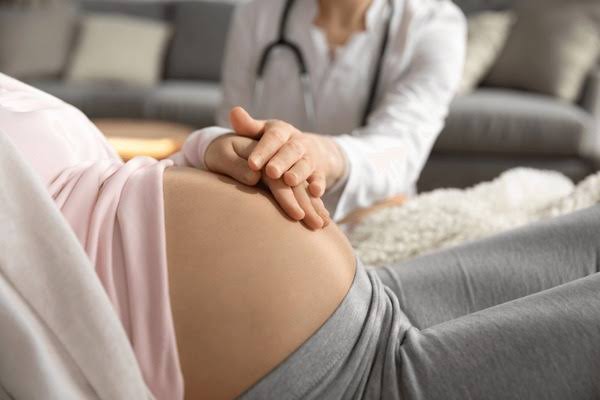
DELIVERY (NORMAL & CESAREAN)
Normal delivery is a natural method of childbirth that is typically less complicated and allows for a quicker recovery. LSCS (Lower Segment Cesarean Section) is a surgical procedure in which an incision is made in the mother's abdomen to deliver the baby. While normal delivery offers a natural birthing experience, LSCS is chosen for medical reasons or complications to ensure a safe delivery for both mother and baby.
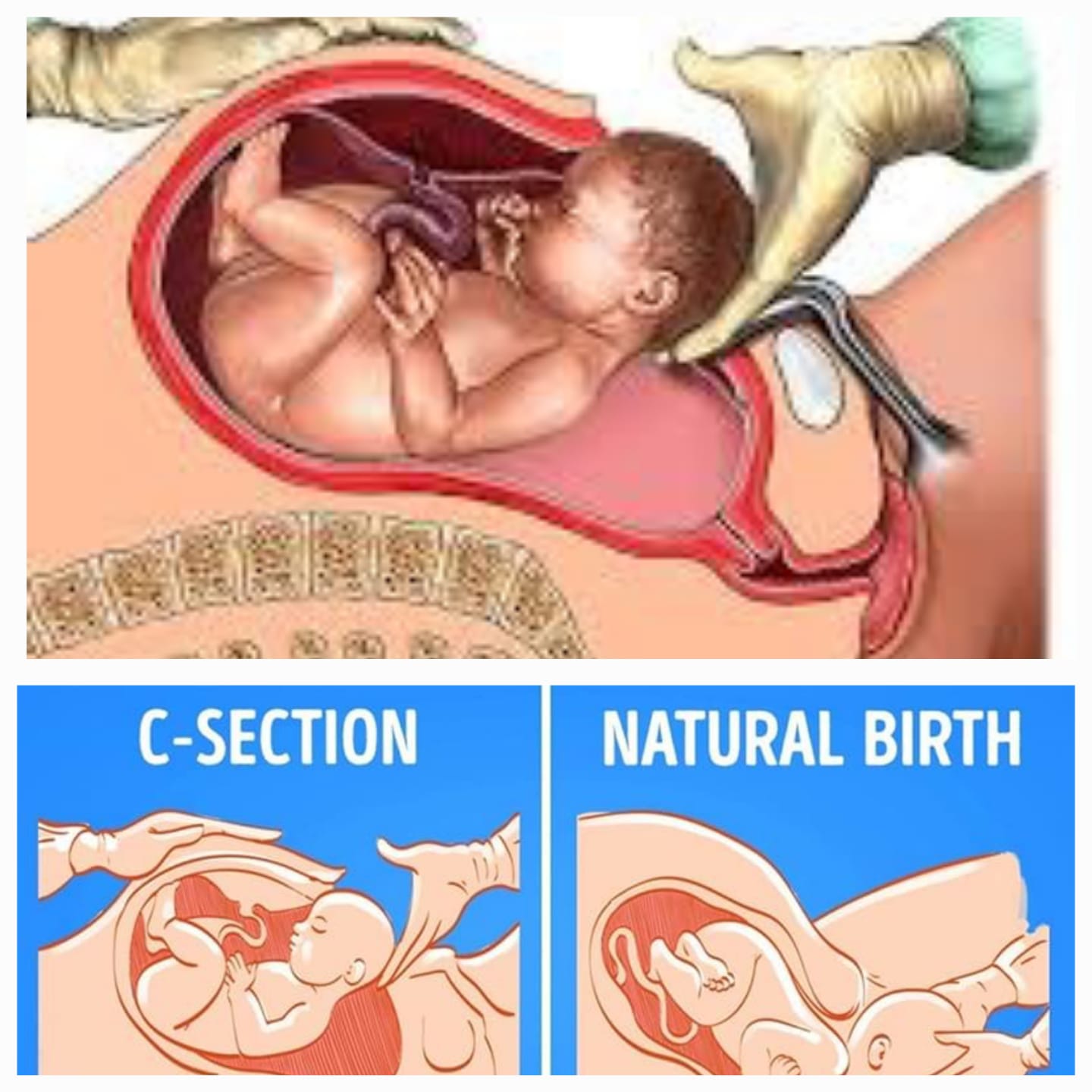
POST-NATAL CARE & GUIDANCE
During the postnatal period, the mother requires both physical and emotional recovery. Proper guidance on diet, hygiene, rest, and breastfeeding is essential. Consulting doctors and specialists is important for stitch care, managing hormonal changes, maintaining mental health, and ensuring proper care for the newborn. Appropriate treatment and counseling during this phase play a vital role in the well-being of both mother and baby.

BREASTFEEDING GUIDANCE
For the first six months, a baby’s nutrition depends entirely on the mother’s milk. Therefore, proper breastfeeding is essential. This section provides information on how to breastfeed the baby and how to hold the baby during feeding.
Breastfeeding Method:
- The mother should preferably breastfeed the baby while sitting or lying down comfortably.
- Clean the nipples with a moist cotton ball before and after feeding.
- Hold the baby properly while breastfeeding.
- While feeding, most of the dark area around the nipple (areola) should be inside the baby’s mouth, and the baby’s chin should be touching the breast.
- Do not force the baby to breastfeed if they are unwilling. Crying may have other reasons besides hunger.

FAMILY PLANNING SURGERIES
Contraceptive counseling provides individuals with information and guidance about various birth control methods, helping them make informed decisions. Family planning surgeries include procedures such as tubal ligation for women and vasectomy for men, which help in controlling reproduction. These methods support planned pregnancies and enable individuals to effectively manage their reproductive health through surgical intervention.
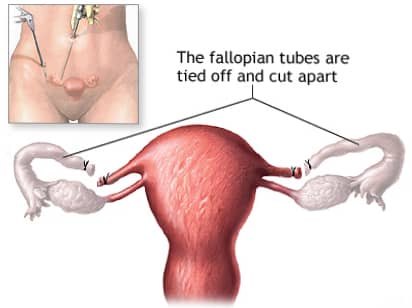
PCOD (POLYCYSTIC OVARIAN DISORDER)
PCOD is a hormonal disorder commonly seen in women. It can affect any woman in the reproductive age group of 15 to 44 years. PCOD mainly occurs due to hormonal imbalance, particularly an increase in the level of androgens, which are male hormones. When these hormones rise above normal levels in women, it can lead to the development of cysts on the ovaries. This results in enlarged ovaries and accumulation of follicles around them, thereby affecting their function. One of the common outcomes is irregular menstrual cycles.
Symptoms of PCOD:
- Irregular or missed menstrual periods
- Unwanted hair growth in areas such as the face, chin, chest, and abdomen
- Increased acne and oily skin
- Thinning of hair on the scalp, leading to hair fall
- Unexplained weight gain
- Hormonal changes causing headaches, fatigue, and sleep disturbances
- Difficulty in conceiving (infertility issues)
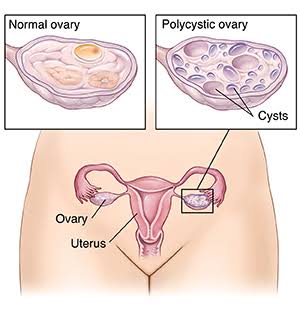
LEUKORRHEA (WHITE VAGINAL DISCHARGE)
It is common for some women to experience white or sticky vaginal discharge a few days before menstruation, during early pregnancy, or after sexual intercourse. This is generally considered normal. However, persistent and noticeable discharge, increased quantity, foul odor, lower back pain, and itching around or inside the vaginal area should not be ignored.
Causes of Leukorrhea:
- Infections in the vagina or uterus (bacterial or fungal infections)
- Inflammation or swelling of the uterus
- Cervical wounds or lesions
- Repeated miscarriages
- Uterine fibroids, uterine cancer, ovarian tumors, sexually transmitted diseases, or uterine prolapse
- Mental stress and anxiety can also increase the occurrence of white discharge in women

HERNIA
A hernia occurs when an internal organ or tissue pushes through a weak spot in the surrounding muscle or tissue, usually in the abdominal area. This results in a visible bulge or swelling in the affected region. Hernias can occur in individuals of all age groups, from infants to the elderly, and they are commonly found in the abdominal wall, groin, or lower back.
Symptoms of Hernia:
- The most common symptom is a visible bulge or lump in the affected area.
- The bulge is often noticeable while standing, bending, or coughing, and can usually be felt by touch.
- The swelling may disappear when lying down or applying gentle pressure.
- Pain or discomfort at the site of the hernia is common.
- In inguinal hernia, a bulge appears in the groin area, and in men, it may extend into the scrotum, causing swelling or a lump.
- In hiatal hernia, symptoms may include heartburn, difficulty swallowing, and chest pain.
- In umbilical hernia, a bulge occurs near the navel (belly button).

APPENDIX
The appendix is a small, pouch-like organ attached to the large intestine on the lower right side of the abdomen. It has a closed end on one side and is open to the large intestine on the other. When the appendix becomes inflamed, the condition is known as appendicitis.
Appendicitis typically occurs when food particles or stool block the opening of the appendix, causing bacteria to multiply inside it. Since one end of the appendix is closed, the trapped material cannot pass through, leading to infection and inflammation. As the infection worsens, the appendix may swell and cause pain. If left untreated, the appendix can burst, spreading infection throughout the abdominal cavity, which can become a life-threatening condition.
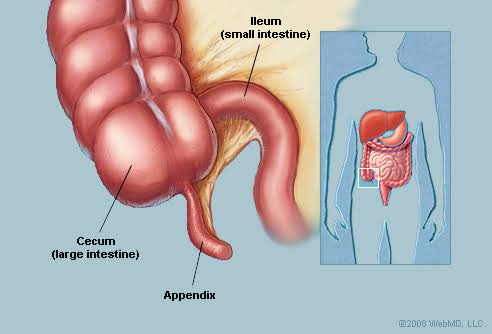
ULCER
An ulcer is a sore or wound that forms on the inner lining of the stomach or small intestine. It typically occurs due to the effect of digestive fluids like hydrochloric acid on the inner lining of these organs. With proper treatment and dietary precautions, ulcers can heal quickly.
Symptoms of an Ulcer:
- Stomach pain shortly after eating
- Frequent pain in the upper abdominal area
- Stomach pain during nighttime or in the early hours
- Feeling of bloating
- Acidity or acid reflux (hyperacidity)
- Burning sensation in the chest and upper abdomen
- Decreased appetite and weight loss
- Nausea and vomiting
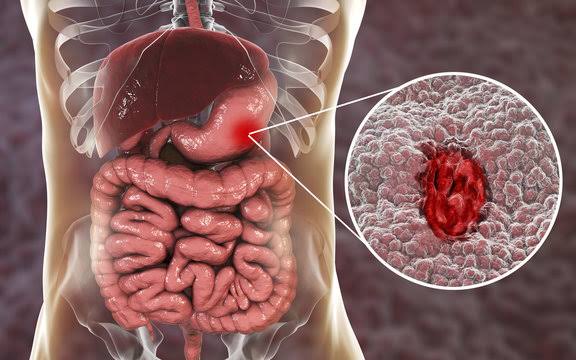
GALLSTONES
Many people suffer from gallstones, which are solid deposits that form in the gallbladder, a small pouch located under the liver on the right side of the abdomen. The gallbladder stores bile, a digestive fluid that helps in the digestion of fats.
Sometimes, bile in the gallbladder forms stones, especially when it contains excessive cholesterol. Gallstones are more common in women than in men.
Symptoms of Gallstones:
- Inflammation of the gallbladder leading to pain in the upper right abdomen
- Abdominal pain, especially worsening after meals
- Fever, nausea, vomiting, jaundice
- Dark-colored urine, excessive sweating
- Pale or clay-colored stools
- Feeling of bloating and frequent belching
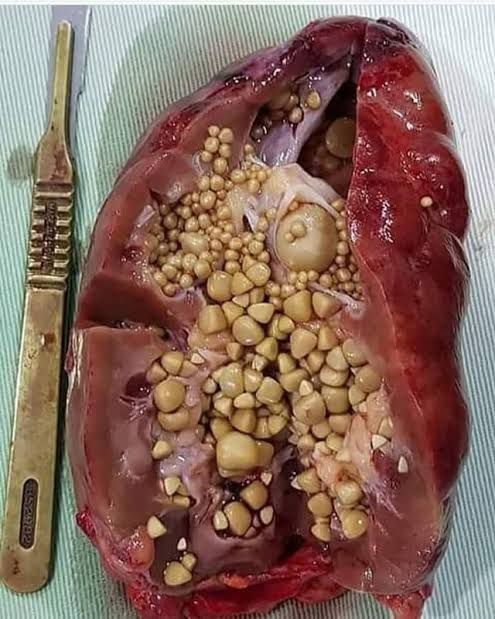
DISEASES OF THE SMALL AND LARGE INTESTINES
Diseases of the small and large intestines include constipation, diarrhea, acidity, Crohn’s disease, ulcerative colitis, irritable bowel syndrome (IBS), intestinal infections, tumors, and cancer.
Treatment includes dietary changes, medications, probiotics, lifestyle modifications, and surgery in severe cases. With timely diagnosis and proper treatment, most diseases can be effectively controlled.
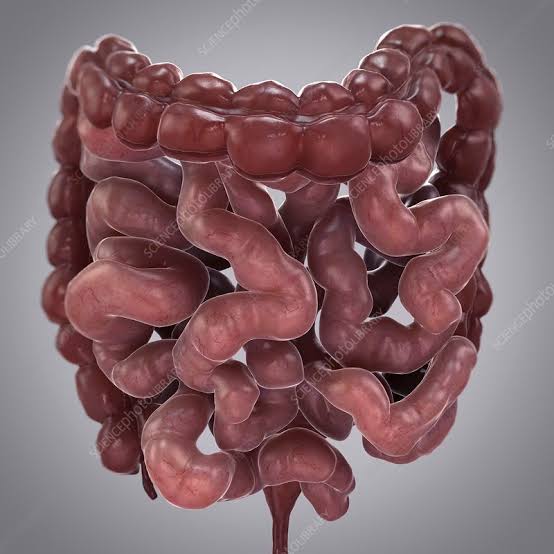
BREAST CANCER
Cancer found in the breast, particularly in the milk glands, is one of the most serious disorders affecting women. Its incidence is higher in women over the age of 30, those who have not breastfed, postmenopausal women, and unmarried women. The risk of developing breast cancer is approximately one in nine women.
Symptoms:
- Breast cancer typically begins in the ducts that carry milk from the glands. Initially, a painless lump or mass may develop in the breast.
- A painless lump or mass in the breast
- Sudden increase in breast size and firmness, or shrinkage of the breast
- Discharge from the nipple, inward-turned nipple, redness, and pain in the nipple
- Muscle pain, back pain, and weakness
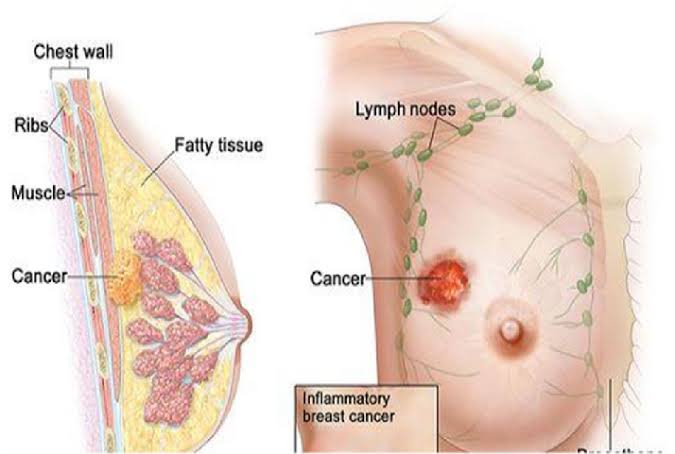
TREATMENT & SURGERY FOR PILES
Piles, also known as Hemorrhoids, is a highly discomforting condition. It involves swelling in the anal and rectal area, leading to the formation of lumps inside and outside the anus. Many people suffer from piles, and the problem tends to worsen over time. Therefore, timely treatment is very important.
In piles, the veins around the anal region become swollen. Symptoms include itching, burning, irritation, and severe pain near the anus. As the condition progresses, bleeding may occur during bowel movements.
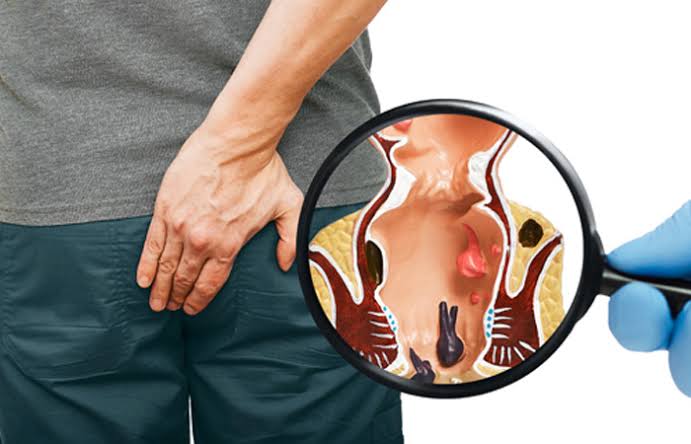
TREATMENT AND SURGERY FOR PILES
Treatment and Surgery for Piles
Piles, also known as Hemorrhoids, is a highly discomforting condition. It involves swelling in the anal and rectal area, leading to the formation of lumps inside and outside the anus. Many people suffer from piles, and the problem tends to worsen over time. Therefore, timely treatment is very important.
In piles, the veins around the anal region become swollen. Symptoms include itching, burning, irritation, and severe pain near the anus. As the condition progresses, bleeding may occur during bowel movements.

FISSURE
Treatment and Surgery for Fissure
In fissure, a tear occurs near the anal region, causing intense pain and bleeding. During this condition, blood is often passed with stools. Fissure is usually not a serious condition and is quite common among people. In most cases, the tear in the anal region heals on its own within four to six weeks, relieving the fissure symptoms. However, if the condition persists beyond eight weeks, it is referred to as a chronic fissure.
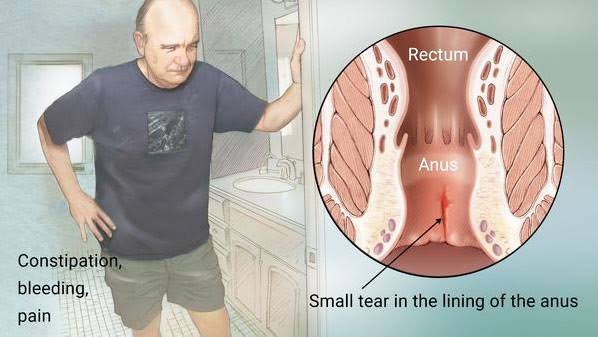
FISTULA
A fistula is an abnormal passage that forms between two parts of the body. These passages can occur between two organs or between two cavities of the body. A fistula can form between the anus and the skin. Fistula in ano can be treated with Laser surgery, Open surgery, Seton/ Ksharsutra surgery.
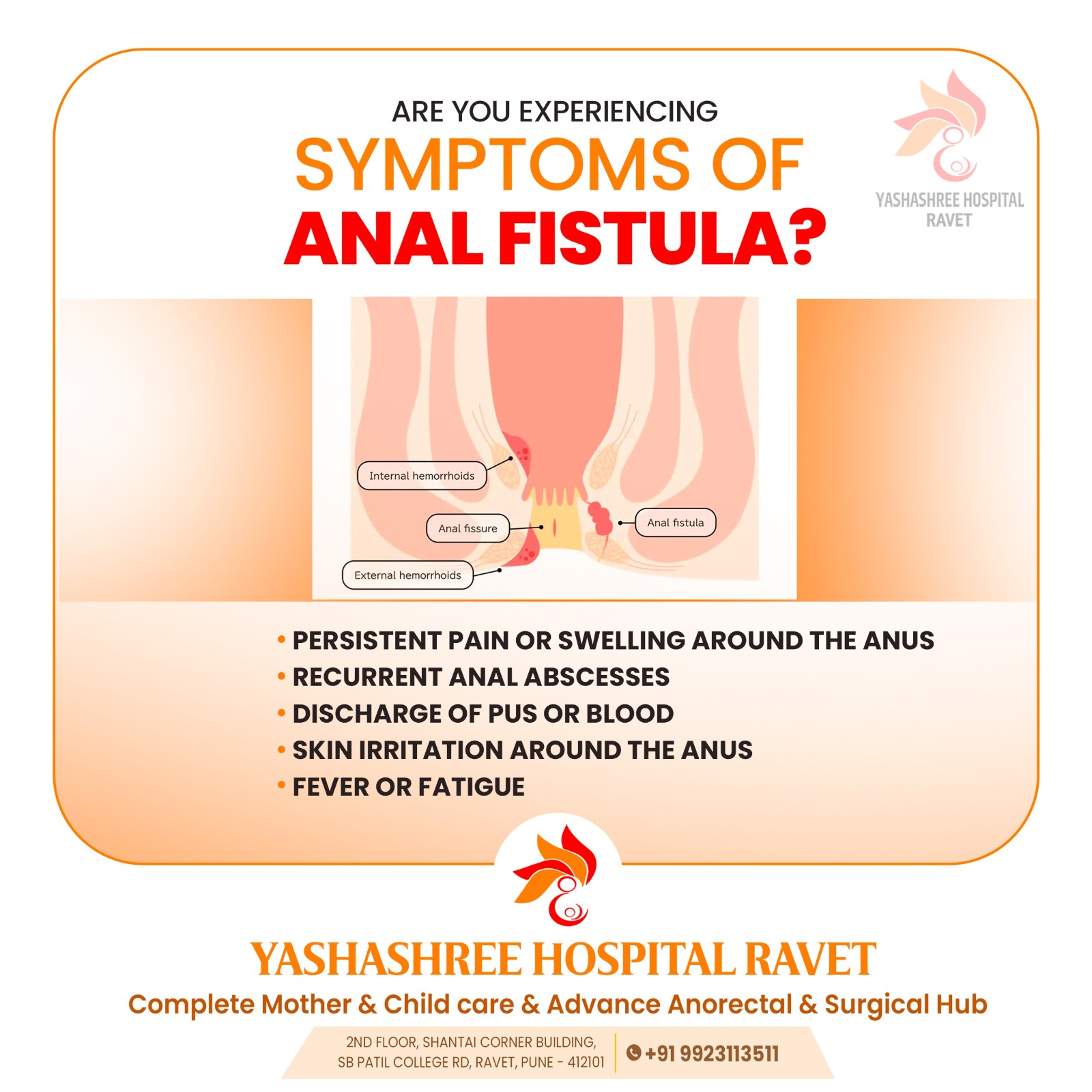
Gallery
